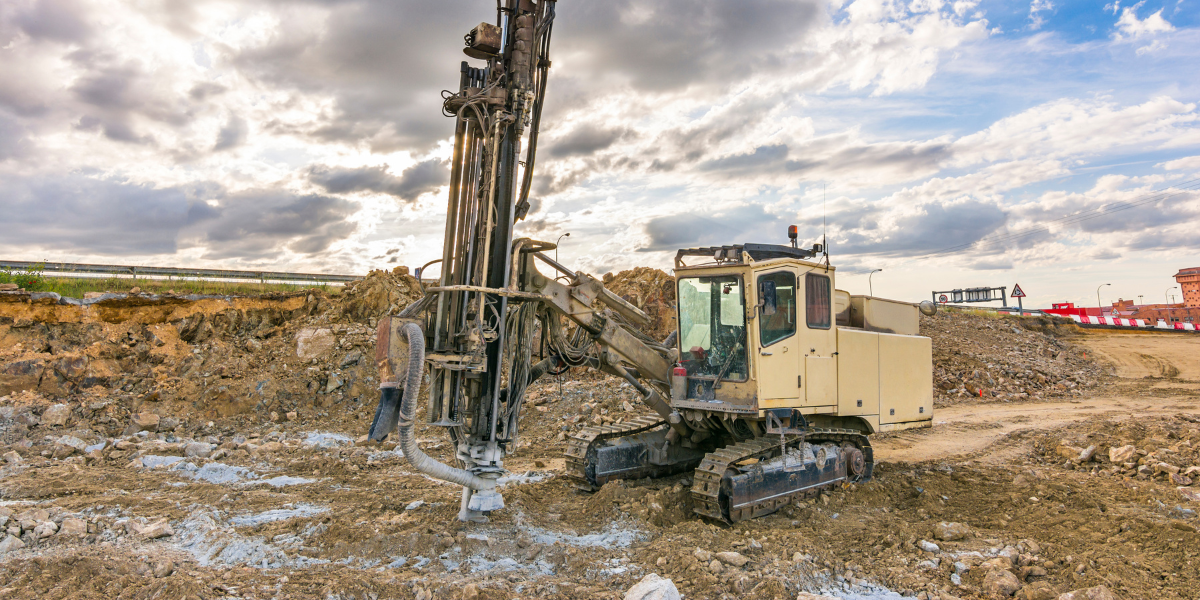Experienced Geotechnical Geologist for In-Depth Ground Investigations
Experienced Geotechnical Geologist for In-Depth Ground Investigations
Blog Article
How Consulting Engineers Enhance Geotechnical Engineering Projects: Insights Into Their Expertise, Approaches, and Collaborative Approaches
Consulting designers are essential in boosting geotechnical design jobs, using their specialized knowledge to navigate the complexities of subsurface problems. Their collective methods foster interaction among diverse project stakeholders, inevitably shaping the project's trajectory.
Duty of Consulting Engineers
The knowledge of speaking with engineers in geotechnical design is essential to the successful implementation of building and construction projects. These professionals play a crucial function in analyzing dirt and rock properties, which are crucial variables influencing design and building and construction choices. By performing complete site investigations, speaking with engineers collect crucial data that informs the style procedure, guaranteeing projects are built on secure and ideal ground.
Consulting designers additionally give indispensable insights into threat management (geotechnical geologist). They identify potential geotechnical threats, such as landslides, dirt liquefaction, and settlement concerns, making it possible for stakeholders to execute reliable mitigation methods. Their competence aids in maximizing structure styles, which can result in substantial price financial savings and boosted security
Furthermore, consulting engineers function as a vital link in between job owners, designers, and specialists. Their capability to convert complex geotechnical information right into actionable suggestions cultivates collaboration and facilitates educated decision-making throughout the job lifecycle. This multidisciplinary technique not only boosts job effectiveness however likewise makes certain conformity with governing criteria and finest methods.
Secret Methods in Geotechnical Design

One primary technique is site examination, which involves carrying out field examinations and lab evaluations to gather data on subsurface conditions. Techniques such as Standard Penetration Testing (SPT) and Cone Infiltration Screening (CPT) are commonly made use of to assess soil stratigraphy and stamina. Additionally, geophysical methods, including seismic and electrical resistivity surveys, supply non-invasive ways to examine subsurface characteristics.
Another vital approach is numerical modeling, which enables designers to imitate different circumstances and predict how soil-structure communications will behave under different loading conditions. Limited Aspect Evaluation (FEA) is a common approach utilized in this context.
In addition, the layout of foundations, preserving structures, and earthworks depends heavily on these approaches - geotechnical geologist. By incorporating advanced logical devices with area information, getting in touch with engineers can develop tailored solutions that attend to details project difficulties, inevitably adding to the security and safety of building and construction projects
Value of Soil Evaluation
Soil evaluation offers as a foundational aspect in geotechnical engineering, giving essential understandings into the physical and chemical properties of soil required for reliable building and construction planning. Comprehending dirt characteristics is crucial for establishing its load-bearing ability, drain actions, and potential for negotiation or instability. In-depth soil examinations, consisting of sampling and lab screening, aid identify specifications such as soil kind, dampness web content, thickness, and shear stamina.
These analyses notify the selection of proper building and construction strategies and materials, inevitably influencing job security and long life. For instance, natural soils may need various foundation styles contrasted to granular dirts, demanding customized design options. Furthermore, dirt analysis aids in identifying pollutants that could present threats to human health and wellness or the environment, enabling the growth of mitigation techniques.
Including dirt analysis into the beginning of task advancement aids to lessen unforeseen difficulties, ensuring that designers can prepare for and address prospective problems prior to they escalate. By establishing a thorough understanding of the site problems, getting in touch with engineers can optimize layout performance and minimize costs, therefore boosting the total success of geotechnical engineering tasks.
Joint Strategies in Jobs
Effective geotechnical jobs typically hinge on joint approaches that bring with each other diverse competence from different disciplines. Efficient cooperation amongst speaking with designers, rock hounds, ecological scientists, and building specialists is critical for resolving complex challenges and enhancing task Check Out Your URL end results. By leveraging the one-of-a-kind abilities and understanding of each staff member, jobs can benefit from an alternative understanding of the site conditions, governing demands, and design restraints.
Routine communication and interdisciplinary meetings assist in the sharing of insights and cultivate a culture of teamwork. These collaborative initiatives allow the recognition of potential risks early in the task lifecycle, permitting for prompt reduction techniques. Including comments from stakeholders, consisting of regional areas and regulative agencies, makes certain that all point of views are taken into consideration, enhancing project acceptance and conformity.
Furthermore, the integration of advanced innovations, such as Geographic Details Systems (GIS) and Structure Details Modeling (BIM), more enhances cooperation. These devices enable the real-time sharing of information and visualization of geotechnical conditions, promoting educated decision-making. Ultimately, a collaborative technique not only streamlines task execution however likewise lays the foundation for cutting-edge services to complex geotechnical design obstacles.
Effect on Job End Results

Consulting engineers employ innovative approaches such as threat assessment and anticipating modeling, which enhance the accuracy of job projections. Their capability to integrate cutting-edge innovations, like geotechnical instrumentation and information analytics, even more refines the style and construction procedures. Because of this, projects experience boosted performance, decreased prices, and decreased delays.
In addition, promoting reliable communication and collaboration among staff member improves analytical capacities. When obstacles arise, a united front enables speedy recognition of solutions, preventing possible obstacles. Eventually, the joint initiatives of consulting designers add to greater quality outcomes, making sure that tasks satisfy both regulatory criteria and customer expectations.
Conclusion

Report this page